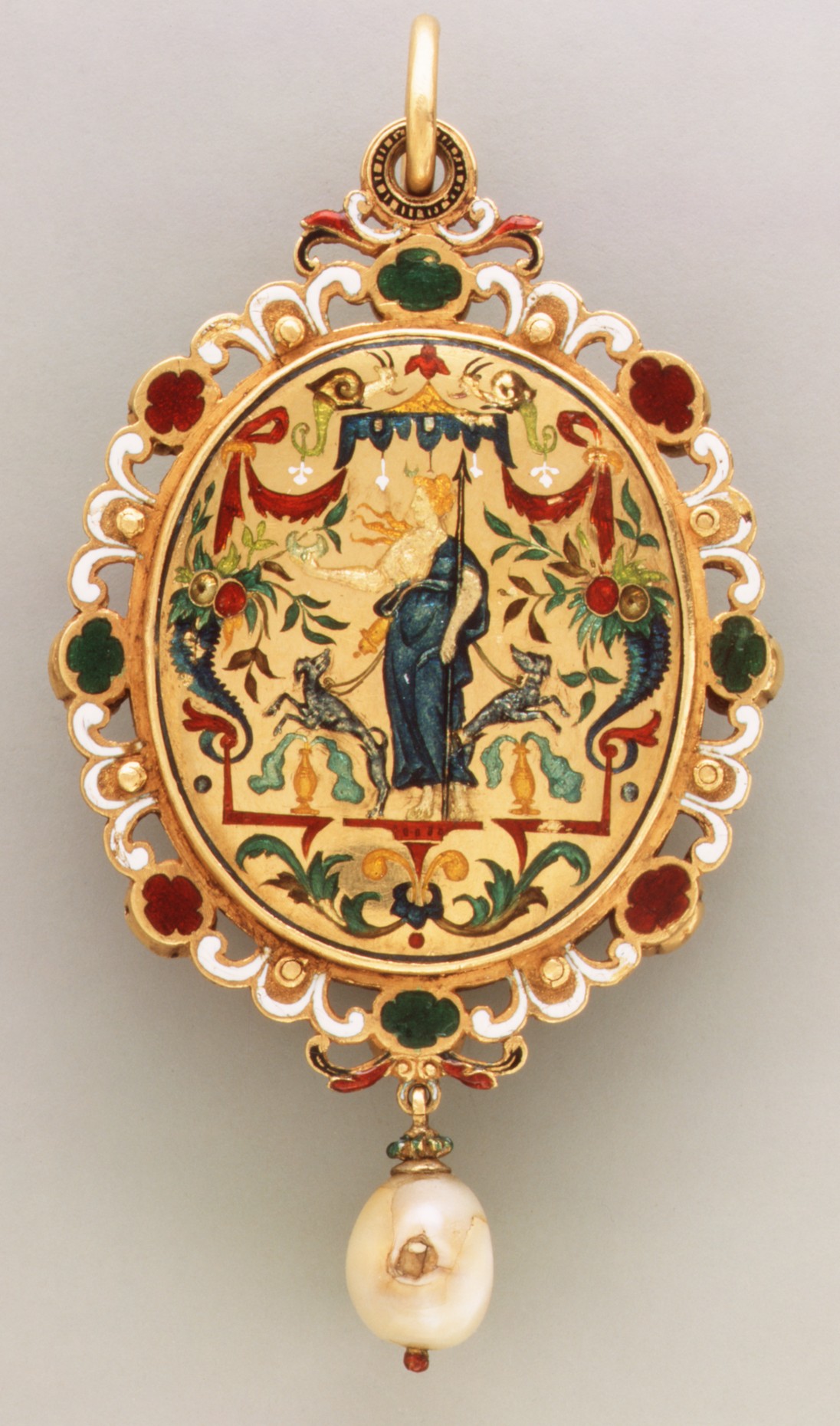Prudence
Enamel on reverse after a design by Etienne Delaune French
The practice of combining hardstone and gold in the same composition originated in Italy, where a piece of this sort was known as a commesso. Prudence gazes into a diamond mirror.
The Italian Renaissance brought with it a wholehearted embrace of classical antiquity throughout the fifteenth and sixteenth centuries. Emulation of ancient cameos played a large part. Carvers invested ancient myths with increasingly refined compositions and techniques, paying close attention to the latest archaeological discoveries. Demand for Italian carvers took them to all the courts of Europe. Milan in particular developed a taste for cameos with wondrous atmospheric effects.
One of the four cardinal virtues, Prudence gazes into a mirror while holding a snake—attributes symbolizing, respectively, her self-knowledge and her wisdom. The pendant is an example of the Italian commesso technique, in which carved gemstones are combined with gold and enamel to create figural compositions. The enamel on the reverse, a nineteenth-century addition, is after a design by Étienne Delaune (1518/19–1583).
Due to rights restrictions, this image cannot be enlarged, viewed at full screen, or downloaded.
This artwork is meant to be viewed from right to left. Scroll left to view more.




